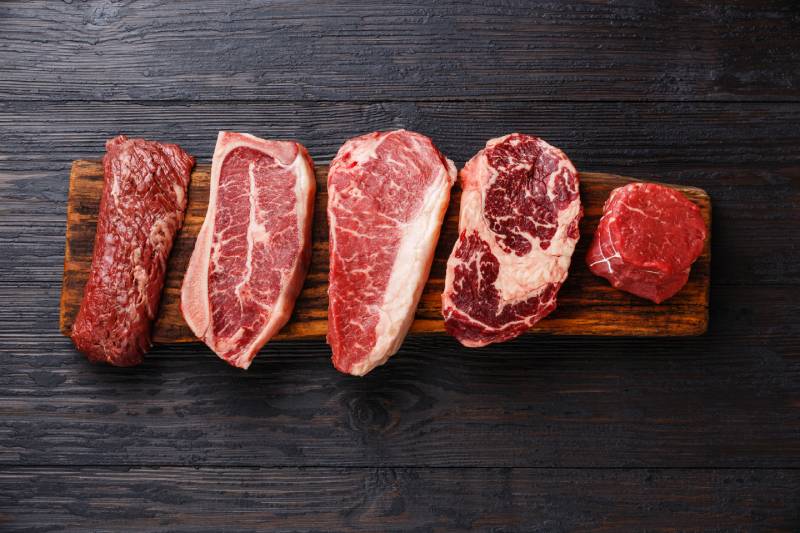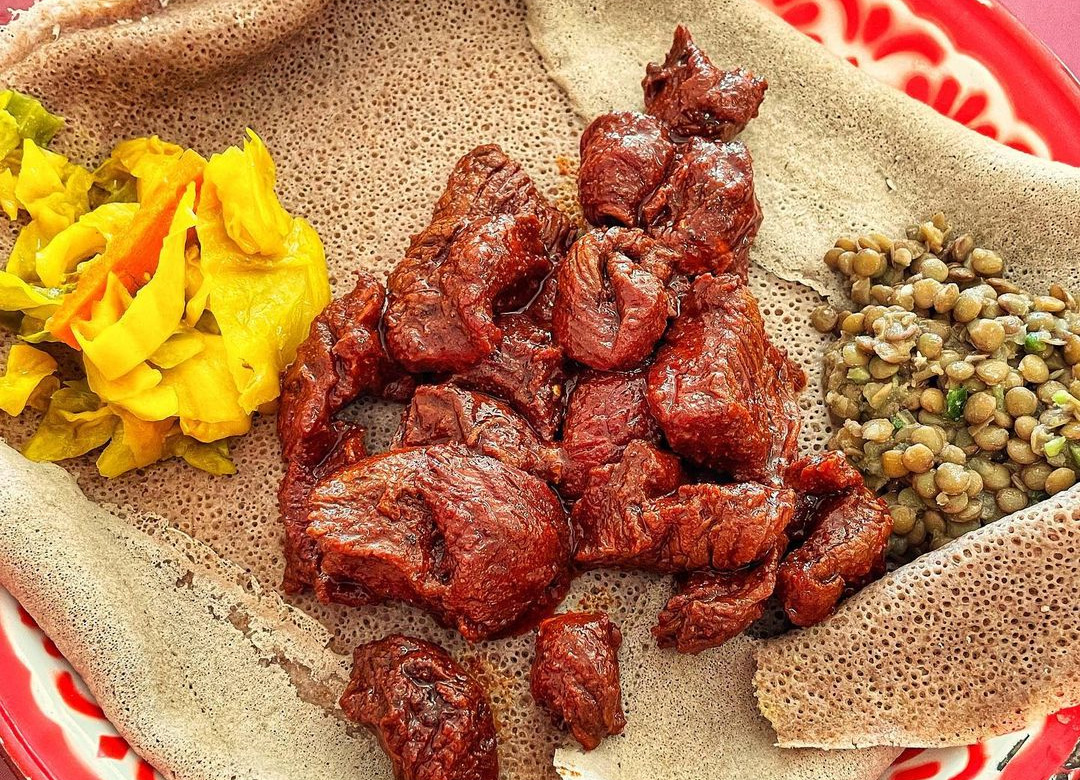Proper handling of raw meat is a critical aspect of food safety and preparation in any kitchen. Whether you’re a home cook or a professional chef, understanding the risks and best practices associated with raw meat can help prevent foodborne illnesses and ensure that your dishes are both delicious and safe to eat. From storage and thawing to preparation and cooking, this guide covers everything you need to know about managing raw meat.
Safe Storage and Thawing of Raw Meat
Storing Raw Meat to Prevent Contamination
Safe storage of raw meat is crucial to prevent the spread of bacteria such as Salmonella and E. coli. Always keep raw meat separate from other food items, especially those ready to eat, to prevent cross-contamination. One should store raw meat in the refrigerator at temperatures below 40°F (4°C) or in the freezer at 0°F (-18°C). Place it on the lowest shelves or in designated drawers to stop juices from dripping onto other items. Using sealed containers or plastic bags can further contain any potential leaks and maintain the quality of the meat.

Thawing Raw Meat: Techniques and Precautions
Thawing raw meat requires careful attention to avoid the growth of harmful bacteria. The safest method is to thaw meat in the refrigerator, which allows it to defrost gradually while still being kept at a safe temperature. For faster thawing, sealing the meat in a plastic bag and immersing it in cold water, with regular water changes every 30 minutes, is an effective method. Alternatively, one can use the microwave’s defrost setting, but this should be followed immediately by cooking since some parts of the meat may begin to cook during the process. Never thaw meat at room temperature on the counter, as this can create a breeding ground for bacteria.
Importance of Refrigeration Times and Best-By Dates
Paying attention to refrigeration times and best-by dates is key for maintaining the safety and quality of raw meat. Each type of meat presents a unique timeframe for safe refrigeration before one must freeze or cook it. For example, you should cook or freeze poultry and ground meats within 1-2 days of refrigerating, whereas cuts of beef and pork can safely remain refrigerated for a slightly longer period of 3-5 days. By paying attention to the best-by dates manufacturers provide and using or freezing the meat by these dates, you can prevent spoilage and consume the meat when it is at its freshest and safest.

Preparing Raw Meat for Cooking
Maintaining a Clean Workspace and Tools
A clean workspace is critical when preparing raw meat in order to minimize the risk of cross-contamination. Surfaces and tools should be thoroughly washed with hot, soapy water before and after contact with raw meat. It’s advisable to use dedicated cutting boards for raw meats, distinct from those used for ready-to-eat foods such as bread and vegetables. Utensils and dishware should also not be shared between raw and cooked meats without proper cleaning in between uses. Following these hygienic practices will help ensure that any bacteria present in the raw meat do not come into contact with other foods or surfaces.
Proper Handling Techniques to Avoid Cross-Contamination
Handling raw meat correctly is essential to avoid the transfer of harmful bacteria to other food items or kitchen surfaces. Always wash your hands with soap and warm water for at least 20 seconds before and after handling raw meat. Use separate utensils for handling raw meat and avoid touching other items in the kitchen until your hands have been washed again. If you need to touch anything else—such as kitchen knobs, switches, or spice containers—use a clean paper towel or disinfect your hands first. Keeping meat handling isolated from other kitchen activities is crucial to food safety.

Marinating Raw Meat: Do’s and Don’ts
Marinating raw meat is a common practice to enhance flavor and tenderness, but it should be done with caution. Marinate meat in the refrigerator, not on the counter, to keep it out of the “danger zone” (40°F to 140°F) where bacteria can rapidly multiply. Always marinate in a covered dish or sealed bag to prevent spills and cross-contamination. If you plan to use some of the marinade as a sauce, set aside a portion before it comes into contact with the raw meat. As reusing marinade that has touched raw meat without proper heating can pose a health risk. Dispose of any leftover marinade that has been in contact with raw meat. Or bring it to a rolling boil to kill any bacteria before serving.
Cooking and Serving Raw Meat Safely
Cooking meat to the recommended internal temperatures is the only way to ensure that harmful bacteria are killed. Using a meat thermometer to check temperatures is essential. For example, one should cook ground meats to at least 160°F (71°C), poultry to 165°F (73.9°C), and beef, pork, lamb. And veal (steaks, chops, roasts) to a minimum temperature of 145°F (62.8°C) and then allow them a 3-minute rest time.These temperatures vary based on the type of meat and preparation method. So it’s important to familiarize yourself with the guidelines specific to the dish you are preparing. By adhering to these standards, you can significantly reduce the risk of foodborne illnesses associated with undercooked meats.

Importance of Resting Time after Cooking
Allowing meat to rest after cooking and before serving is an often overlooked but critical step in the cooking process. This resting period allows the juices to redistribute throughout the meat, improving flavor and texture. Furthermore, during this time, the internal temperature of the meat can continue to rise slightly. Which further contributes to the safety and doneness of the meat. The recommended resting time varies depending on the size and type of meat but generally ranges from 3 to 10 minutes. By incorporating this simple step into your cooking routine. You can ensure that your meat is both safer and more enjoyable to eat.
Serving Raw Meat Dishes Safely
Some cultural cuisines and culinary preferences call for dishes that feature raw or partially cooked meats, such as carpaccio, tartare, or rare steaks. When serving these dishes, it’s crucial to use the freshest possible meat from reputable sources. Moreover, these dishes should be prepared as close to serving time as possible and stored under strict temperature control until they are ready to be eaten. It’s equally important to inform your guests that the dish contains raw or undercooked meat, as certain populations, including pregnant women, young children, the elderly. And compromised individuals, may be at greater risk of foodborne illnesses. Practicing these safety measures ensures that enjoying such dishes can be a delightful experience without compromising on health.

Cleaning Up After Handling Raw Meat
Sanitizing Surfaces and Utensils
After cooking and serving dishes that contain raw meat. It’s imperative to properly clean and sanitize all surfaces and utensils that came into contact with the meat. This includes cutting boards, knives, countertops, and any other equipment used during the preparation process. Hot, soapy water can effectively clean these items, but following up with a sanitizer, such as a bleach solution, can provide an additional layer of safety by killing any lingering bacteria. This thorough cleaning process helps prevent the bacteria from contaminating future meals and keeps your kitchen safe for food preparation.
Proper Disposal of Meat Packaging
Packaging materials for raw meat often contain blood and juices that can harbor bacteria if not disposed of properly.You should immediately place these materials in a sealed bag or container and put them in the trash to minimize the risk of cross-contamination. Handwashing after handling raw meat packaging is just as important as after handling the meat itself. Keeping the preparation area clean and free from packaging residues ensures a safer kitchen environment for cooking.


